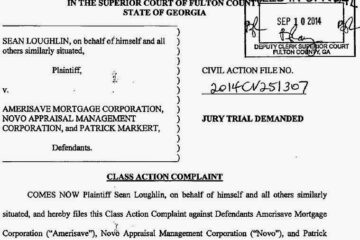One case that cannot be ignored on something called the Appraiser Law Blog is Gibson, et al. v. Credit Suisse, Cushman & Wakefield, et al. Even though the plaintiffs’ claims in my view just amount to buyer’s remorse following a deflated real estate price bubble, the case needs to be recognized because:
- It is an ugly reflection of what is happening to the appraisal profession with liabilities being pushed on appraisers as the result of an epidemic of buyer’s and lender’s remorse.
- The case shows how little the appraisal concepts of “client,” “intended user” and “intended use” mean when an appraiser becomes a defendant to third party claims — here, the plaintiffs suing the appraisal firm are parties who purchased properties in developments built or marketed by developers who borrowed money from the appraisal firm’s true client.
- It also reflects the general willingness of appraisers to turn on their colleagues with reviews and testimony against defendant appraisers who delivered appraisals at the height of the bubble years — even to the point of advocating that far-removed third parties like the plaintiffs in this case were “intended users” and have valid legal claims, while forgetting that they themselves may be the next defendants.
- The case is the biggest litigation ever against appraiser defendants in terms of alleged damages – the damages sought in the initial complaint were $24 billion. Now, they are $8 billion because the court previously dismissed claims that might have supported treble damages.
The current status of the case is that the trial court judge was considering defendants’ motions to dismiss the plaintiffs’ Third Amended Complaint and considering the recommendations made by the magistrate judge on those motions. Judge Lodge issued a ruling on the motions on March 30, 2012. The sum of his ruling as far as it affects the appraisal defendant Cushman & Wakefield is that plaintiffs will be permitted to go forward on their class-action alleged claims of negligence and tortious interference against the firm and that certain of the individual plaintiffs will be permitted to go forward with claims about fraud and negligent misrepresentation. The case will now proceed with discovery and preparation for trial, though we can anticipate that the defendants will file motions for summary judgment, which will be given serious consideration by the trial court, given that it expressed hints about the weakness of plaintiffs’ support for their claims. In any event, I have no doubt that several million dollars will be spent on the appraisal firm’s legal defense.
This was Judge Lodge’s ruling on Cushman & Wakefield’s motion to dismiss:
Peter Christensen is an attorney who advises professionals and businesses about legal and regulatory issues concerning valuation and insurance. He serves as general counsel to LIA Administrators & Insurance Services. He can be reached at [email protected].

